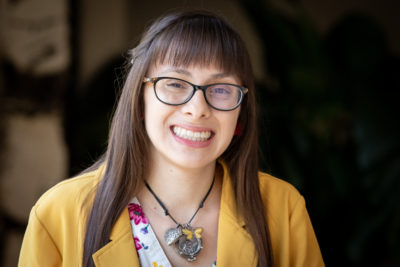This blog was cross posted from HOMEROOM, the official ED.gov Blog.
The strength of the American economy is inextricably linked to the strength of our workforce. As the U.S. economy continues to grow, employers report difficulty in finding workers with the specific skills and knowledge that they need. In order to maintain America’s competitive edge, it is critical that employers have access to highly skilled workers to meet the challenges of today’s labor market. With nearly one in five people in the United States identified as having a disability, individuals with disabilities comprise a large group of potential employees who, with the necessary skills and credentials, could help fill this unmet need and participate fully in the labor market and our society.
We know, however, that only about 20 percent of people with disabilities are participating in the labor force, and, that rate is significantly lower for those with only a high school diploma or less. For employed people with disabilities, data reveal that they are underrepresented in management and professional/technical jobs, and overrepresented in service, production, and transportation jobs.
Too often, however, our systems for preparing low-skilled individuals with disabilities with marketable and in-demand skills can be complex and difficult to navigate for students, job seekers, and employers. Career pathways can offer an efficient and customer-centered approach to training and education by integrating the necessary educational instruction, workforce development, and human and social services and supports that are linked to labor market trends and employer needs, leading to stackable credentials.
The State Vocational Rehabilitation (VR) Agency often serves as the primary vehicle in the workforce development system for assisting individuals with disabilities, particularly individuals with the most significant disabilities, to prepare for, obtain, retain, or advance in competitive integrated employment. As partners in the one-stop service delivery system established under the Workforce Innovation and Opportunity Act (WIOA), State VR agencies are well-positioned to coordinate and collaborate with other entities, such as secondary and postsecondary educational institutions, workforce centers and other training providers, human and social service agencies, employers, and other community stakeholders, to develop workforce approaches that are effective in assisting individuals to attain knowledge and skills that can lead to employment in high-demand occupations.
Accordingly,we are pleased to announce a notice of final priority and notice inviting applications to establish model demonstration projects to develop and use career pathways to help individuals with disabilities, including youth with disabilities, acquire necessary marketable skills and recognized postsecondary credentials. We expect to award $3.5 million to State VR agencies, in partnerships with other entities, to develop and implement a collaborative model project demonstrating promising practices and strategies in the use of career pathways to improve the skills of individuals with disabilities, including youth with disabilities, and help them attain the credentials to succeed in our 21st century economy.
We know that the use of career pathways is an effective workforce development strategy that can provide individuals, particularly those with the greatest barriers to employment, with seamless transitions into postsecondary education and employment in careers that provide a family-sustaining wage. Take, for example, the three seniors with disabilities from North Bend High School in Oregon who, with the help of the school transition specialist, a VR counselor, and the local community college, completed a program for Certified Nursing Assistance I (C.N.A). Students were required to attend a total of 75 hours of class training and complete an additional 80 hours of clinical training after school and weekends at a local assisted living center. These students are now enrolled in the C.N.A. II class.
We believe this career pathways investment by the Department of Education, and similar investments by this Administration, will serve to improve the well being of individuals with disabilities, the families they support, the communities in which they live, and our economy.
Michael Yudin is Assistant Secretary of the Office of Special Education and Rehabilitative Services, and Johan Uvin is the Acting Assistant Secretary of the Office of Career, Technical and Adult Education




